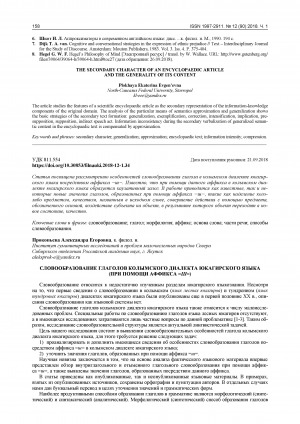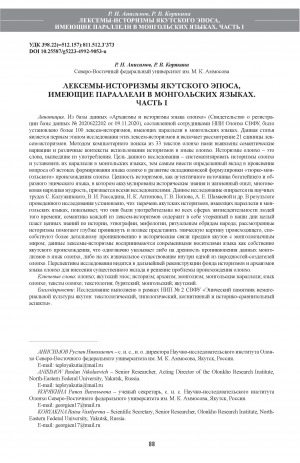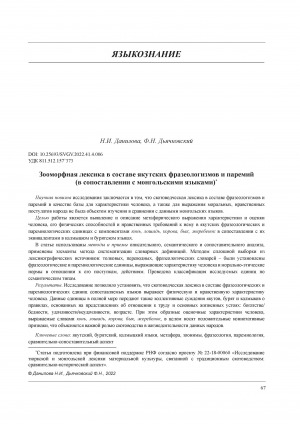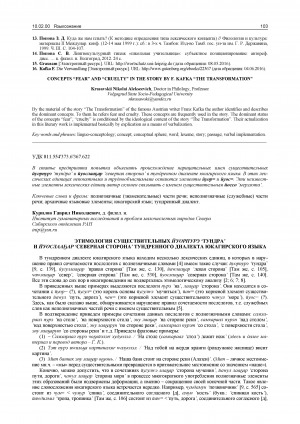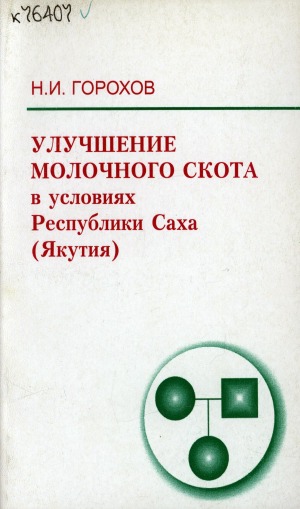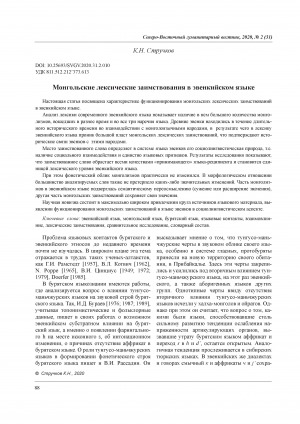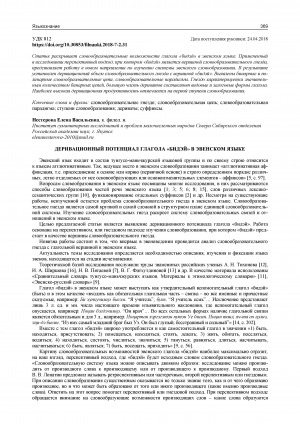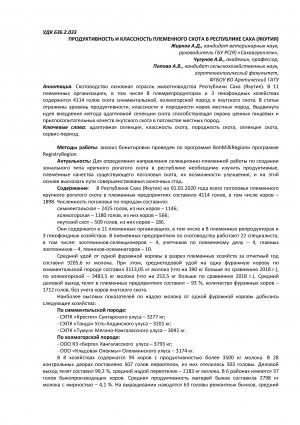
Терминологические словосочетания, обозначающие части тела скота, в якутском языке (в сопоставлении с бурятским) = Terms denoting livestock body parts in the Yakut language (in comparison with the Buryat language)
Статья в журнале
Русский
811.512.157:811.512.31
якутский язык; бурятский язык; сравнительно-сопоставительное исследование; словообразование; скот; части тела; Yakut; Buryat; comparative-contrastive studies; word formation; livestock; body parts
Языкознание / Языки мира
Сибирский филологический журнал: [научный журнал. – 2023. – 4
С. 197-210
Сибирский филологический журнал: [научный журнал
Новосибирск, Институт филологии Сибирского отделения Российской академии наук
Основан в 2002 г.
Выходит ежеквартально
1813-7083 (print)
Сибирский филологический журнал : [научный журнал / учредители: Институт филологии СО РАН Сибирского отделения РАН ; главный редактор И. В. Силантьев]. - Новосибирск : Институт филологии Сибирского отделения Российской академии наук, 2002-. - 2023, N 4. - 340 с.
The paper presents a structural description of the terminological phrases relating to the thematic group “Livestock body parts” in the Yakut and Buryat languages. These lexical units refer to the folk terms reflecting the features of the material and spiritual culture of an ethnic group and are widely used in languages of very different typologies. Such phrases are formed analytically, representing non-single-word nominative units denoting one specific concept or real object. Their lexical meaning can be realized at the denotative and/or connotative levels. The terminological phrases under study occupy a special place in the lexicon of the languages in question as an effective way of creating terms. Word pairs are a part of this vocabulary group. An active way of compound word formation in Yakut and Buryat is the method of adjunction used to form attributive phrases with an adjective or a participle as an attribute. Both languages feature terminological phrases formed morphologically. Such phrases have an attributive function, designating a part of a whole object or a type of a generic concept, with the determining component occupying the preposition. In Yakut, these phrases have their components connected by the possessive affix of the third person. Buryat terms denoting animal body parts are formed by a combination with the determining component in the genitive case. It is noteworthy that in Yakut nominal constructions, the indicator of the connection between the components is attached to the component being determined, while in Buryat, it is attached to the determining one.
Данилова, Н. И. Терминологические словосочетания, обозначающие части тела скота, в якутском языке (в сопоставлении с бурятским) / Н. И. Данилова, Ф. Н. Дьячковский ; Институт гуманитарных исследований и проблем малочисленных народов Севера // Сибирский филологический журнал. - 2023. - N 4. - С. 197-210. - DOI: 10.17223/18137083/85/15
DOI: 10.17223/18137083/85/15
Чтение документа возможно в помещении библиотеки

